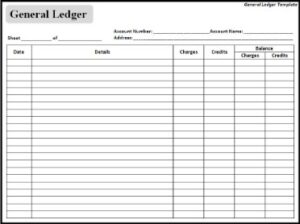
This focuses on the use and interpretation of financial information to make sound business decisions. It’s similar to financial accounting, but this time, it’s reserved for internal use, and financial statements are made more frequently to evaluate and interpret financial performance. Auditors play a critical role in ensuring compliance with financial regulations by examining financial statements and accounting records to identify any potential violations.
Financial Data Management

Through financial ratio analysis, financial accounting allows these parties to compare one balance sheet account with another. For example, the current ratio compares the amount of current assets with current liabilities to determine how likely a company is going to be able to meet short-term debt obligations. Accounting managers are responsible for overseeing the accounting department of a company. They ensure that financial statements are accurate and that all financial transactions are recorded correctly.
Google is bringing Gemini access to teens using their school accounts
Financial analysts use this information to calculate financial ratios, such as return on assets, debt-to-equity ratio, and current ratio. Financial accounting is a specific branch of accounting involving a process of recording, summarizing, and reporting the myriad of transactions resulting from business operations over a period of time. The four types of accounting – financial accounting, managerial accounting, cost accounting, and tax accounting – provide different insights into a company’s financial health and performance.
Types of accounting FAQ
- A balance sheet is a snapshot of a company’s health and does not offer insights about long-term growth.
- Accounting principles differ around the world, meaning that it’s not always easy to compare the financial statements of companies from different countries.
- Public accounting focuses on helping a range of clients, including individuals, corporations, and small businesses, by providing services based on their needs.
- Analysts, managers, business owners, and accountants use this information to determine what their products should cost.
Financial accounting is governed by Generally Accepted Accounting Principles (GAAP) in the United States and International Financial Reporting Standards (IFRS) in many other countries. Financial transactions are recorded using a double-entry accounting system, which ensures that every transaction is recorded in two different accounts – a debit account and a credit account. This system helps to ensure the accuracy of financial records and provides https://www.online-accounting.net/ a clear picture of a company’s financial position. This makes it easier for investors to analyze and extract useful information from the company’s financial statements, including trend data over a period of time. It also facilitates the comparison of financial information across different companies. They need to provide accurate numbers and sound analysis to all relevant stakeholders and then ensure the safety and security of that data.
The users of managerial accounting information are pretty easy to identify—basically, they’re a firm’s managers. We need to look a little more closely, however, at the users of financial accounting information, and we also need to know a little more about what they do with the information that accountants provide them. Management accountants provide information and analysis to decision makers inside the organization in order to help them run it. Financial accountants furnish information to individuals and groups both inside and outside the organization in order to help them assess its financial performance. Managerial accounting uses operational information in specific ways to glean information.
The balance sheet is important because it provides a snapshot of a company’s financial position. By analyzing the balance sheet, businesses can determine their liquidity, solvency, and financial flexibility. Accounting also involves analyzing financial data to identify trends and patterns, as well as https://www.online-accounting.net/posting-to-the-general-ledger/ forecasting future financial performance. This information is used by business owners and managers to make informed decisions about the direction of the company. Bookkeeping is a crucial aspect of accounting, as it involves the recording of all financial transactions that occur within a business.
Analysis and advice results from scrutinizing a company’s financial documentation. In the case of a larger organization, a Chief Financial Officer might receive all of the relevant data and then spend a great deal of time preparing a presentation for the Board of Directors or other stakeholders. Their report should help the audience understand the true meaning of the numbers, so that they can make decisions for the company’s future. This is the sum of all the company’s liabilities plus its equity or retained earnings. A balance sheet is a snapshot of a company’s health and does not offer insights about long-term growth.
You don’t want to be in a situation where you have to pay more income tax than is normally required by the Internal Revenue Service (IRS). Tax professionals include CPAs, attorneys, accountants, brokers, financial planners and more. Their primary job is to help clients with their taxes so they can avoid paying too much or too little in federal income or state income taxes. The difference between these two accounting methods is the treatment of accruals. These four largest accounting firms (Ernst & Young, KPMG, PricewaterhouseCoopers, Deloitte) conduct audit, consulting, tax advisory, and other services.
A chart of accounts, or COA, is a complete list of all the accounts involved in your business’s day-to-day operations. Your COA is useful to refer to when recording transactions in your general ledger. Each time you add or remove an account from your business, it’s important to record it in your books. According to the objectivity principle, the accounting data should be definite, verifiable, and free from the personal bias of the accountant. Each transaction recorded in the accounts should have evidence to support it, for example, in the form of receipts, cash memos, or invoices. Revenue is the gross inflow of cash and receivables of an enterprise from the sale of goods of services or the yielding of any interest, royalties, and dividends.
It provides business owners and managers with the information they need to make informed decisions and ensure the financial health of their company. Accounting is a crucial aspect of any business, regardless of its size or industry. It involves the process of recording, classifying, and summarizing financial transactions to provide relevant information for decision-making purposes. Accounting provides a comprehensive overview of a company’s financial health, which is essential for its survival and growth. Just as managerial accounting helps businesses make management decisions, cost accounting helps businesses make decisions about costing. Essentially, cost accounting considers all of the costs related to producing a product.

Accrual accounting is based on the matching principle, which is intended to match the timing of the realization of revenues and an expense. By matching revenues with expenses, the accrual method gives a more accurate picture of a company’s true financial position. Under the accrual method, transactions are recorded when they are incurred rather than when payment is actually made. This means a purchase order is recorded as a revenue even though the funds are not received immediately.
IFRS, for example, is a little stricter about the ways you can calculate the costs of inventory, but we’re not going to dwell unnecessarily on such fine distinctions. Bear in mind, however, that, according to most experts, a single set of worldwide standards will eventually emerge to govern the accounting practices of both U.S. and non-U.S. The financial accounting group records accounting transactions and converts the resulting what are other receivables meaning formula and example information into financial statements. Its primary responsibility is to generate financial statements and the related disclosures that fairly reflect the financial results and condition of the organization. Its primary beneficiary is outsiders, such as investors, creditors, and lenders. Public companies are required to perform financial accounting as part of the preparation of their financial statement reporting.

